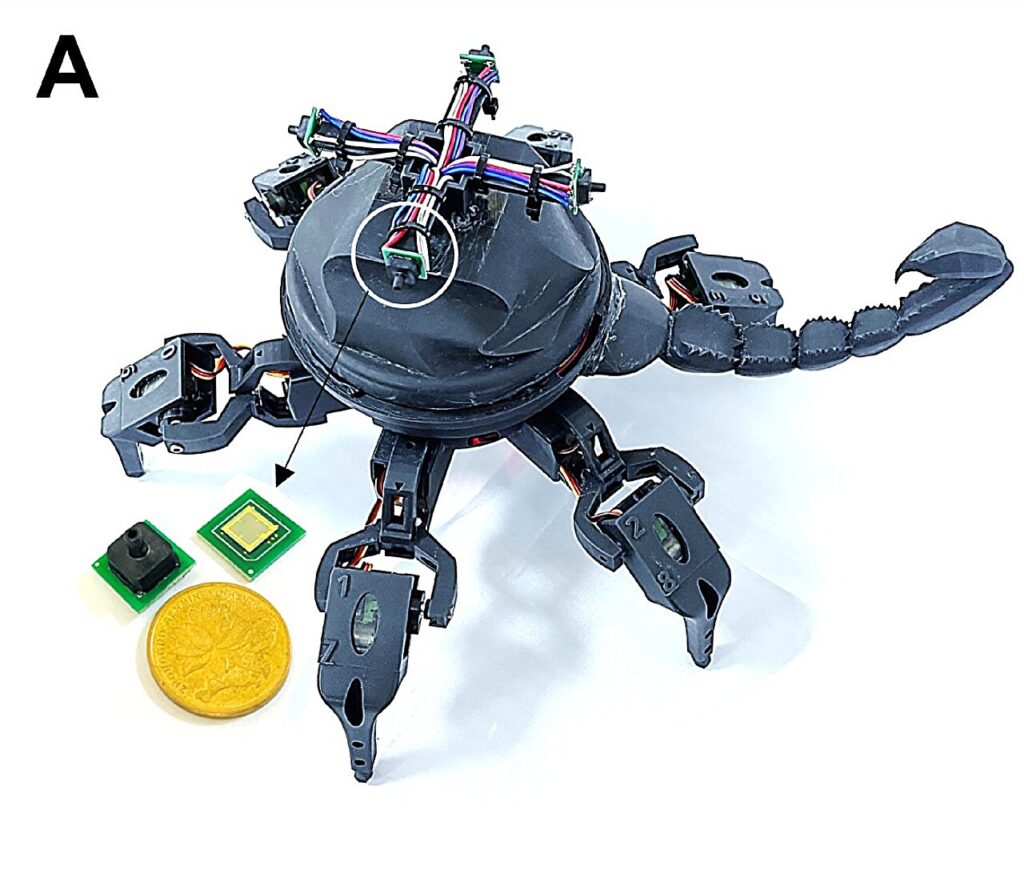Nature, the master engineer, is coming to our rescue again. Inspired by scorpions, scientists have created new pressure sensors that are both highly sensitive and able to work across a wide variety of pressures.
Pressure sensors are key components in an array of applications, from medical devices and industrial control systems to robotics and human-machine interfaces. Silicon-based piezoresistive sensors are among the most common types used today, but they have a significant limitation. They can’t be super sensitive to changes and work well across a range of pressures at the same time. Often, you have to choose one over the other.
Nature got there before us
However, nature has already solved this problem through millions of years of evolution. So to play catch-up and design better sensors, Pinkun Wang from the Key Laboratory of Bionic Engineering (Ministry of Education) at Jilin University in China and colleagues studied the highly sensitive mechanosensory systems scorpions use to detect environmental changes. The researchers developed a way to mimic the scorpion’s pressure-sensing apparatus. These are tiny, hair-like structures known as trichobothria and the flat slits on their shell with mechanosensory neurons called slit sensilla.
The study is published in the journal Science Advances.

They built tiny stress traps to mimic the slits and flexure suppression units to act like the hairs. When placed on top of a computer chip, the stress traps greatly improved the sensor’s ability to detect even the slightest pressure. Meanwhile, on the bottom of the chip, the flexure suppression units improved sensor accuracy.
To test their concept in the real world, the researchers integrated the sensor with a deep learning network and attached it to six-legged robots. The robots were able to mimic the scorpion’s ability to sense its surroundings by detecting tiny changes in the air pressure around them.
These scorpion-bots rapidly escaped from looming cardboard boxes once they sensed the advancing objects as large “predators” and quickly moved toward small boxes they detected as “prey.”
Describing their work, the researchers wrote, “This work underscores the potential to leverage key design concepts inspired by living insects for improved sensing performance and offers structural insights for other high-precision sensors.”
These scorpion-inspired sensors are a major step toward creating more intuitive and adaptive robots. They could give intelligent robots a much better sense of their surroundings, improving collision avoidance and allowing them to work in conditions where vision is limited, such as in the dark or where there’s lots of smoke and dust. The technology also has implications for health monitoring, allowing for more precise detection of pressure signals from the body, such as a weak heartbeat or faint pulse.
Written for you by our author Paul Arnold,
edited by Gaby Clark, and fact-checked and reviewed by Robert Egan—this article is the result of careful human work. We rely on readers like you to keep independent science journalism alive.
If this reporting matters to you,
please consider a donation (especially monthly).
You’ll get an ad-free account as a thank-you.
More information:
Pinkun Wang et al, Hypersensitive pressure sensors inspired by scorpion mechanosensory mechanisms for near-body flow detection in intelligent robots, Science Advances (2025). DOI: 10.1126/sciadv.ady5008
© 2025 Science X Network
Citation:
Scorpion-inspired pressure sensors let robots feel their surroundings (2025, August 22)
retrieved 25 August 2025
from https://techxplore.com/news/2025-08-scorpion-pressure-sensors-robots.html
This document is subject to copyright. Apart from any fair dealing for the purpose of private study or research, no
part may be reproduced without the written permission. The content is provided for information purposes only.

